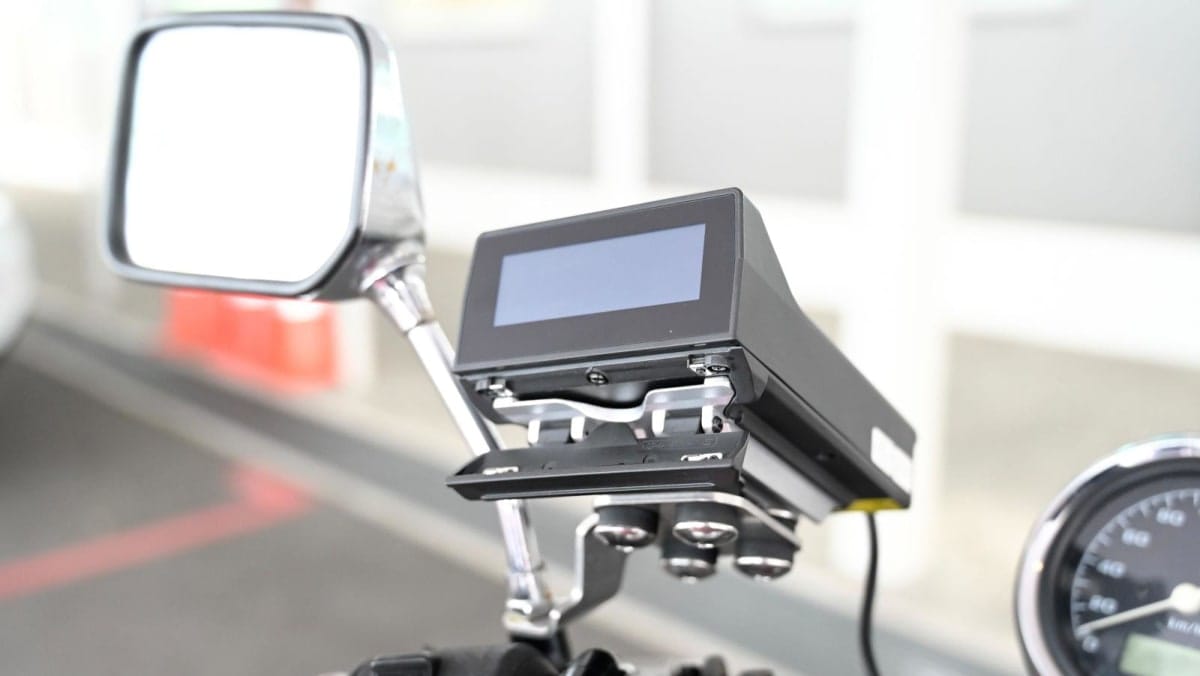One-piece ERP 2.0 unit for motorbikes cannot be used in cars due to 'greenhouse effect': Chee Hong Tat

Source: CNA
SINGAPORE: The one-piece ERP 2.0 on-board unit (OBU) used for motorcycles cannot be used for cars, as the "greenhouse effect" within a car can make it too hot for such a device to be placed on the dashboard.
On Wednesday (May 8) in parliament, Minister for Transport Chee Hong Tat explained the rationale for cars requiring a three-piece OBU. Issues related to the device, including its multiple parts and placement within the vehicle, have caused considerable consternation among motorists.
Specifically, Mr Chee was responding to a question by Member of Parliament Lim Wee Kiak (PAP-Sembawang), who had asked why a one-piece OBU could not be used for both motorcycles and cars.
"If you think about the physics of it, in an enclosed environment with glass, it is like a greenhouse ... which will cause the interior of the car in an enclosed space to be warmer," replied Mr Chee.
He said tests had shown it was "quite clear" that both footwells - driver and passenger - experienced significantly lower temperatures than that of the dashboard on a sunny day.
"The ambient temperature: If it's about 35 degrees - for the motorcycle, (it) is pretty much that because it's not an enclosed space," said Mr Chee.
For the footwell of a car, he added, temperatures can go up to 38 to 39 degrees Celsius and on the dashboard, as high as 50 to 52 degrees Celsius.
"With this kind of temperature, if you were to put a single-piece OBU, which means the antenna, the display, and the processing unit all on the dashboard, there is a risk that it could overheat, and then it will affect the functionality of this unit," he said.
A cooling fan could be incorporated into the OBU's design, but this would make the system very bulky.
"I don't think motorists will want a very big and bulky one piece unit on their dashboard. It would not be the right design," he said.
Mr Chee also responded to another question by Dr Lim on the installation of the processing unit at the driver's footwell ever since the Land Transport Authority made it clear last week it was an option.
The processing unit holds payment cards, also known as CEPAS cards, such as the NETS FlashPay card, NETS Motoring Card and EZ-Link Motoring Card, which drivers use to pay for electronic road pricing or parking charges.
Dr Lim referenced a CNA article citing concerns by car mechanics that installing the processing unit at the driver's footwell may also come with its own set of complications.
Referring to the article, Mr Chee agreed with the assessment of the mechanics.
"It's not so straightforward for all vehicle makes and models, because depending on the design and the layout and specifications of different vehicles, the preferred location, the ideal location (of the processing unit) may vary from vehicle to vehicle," he said.



